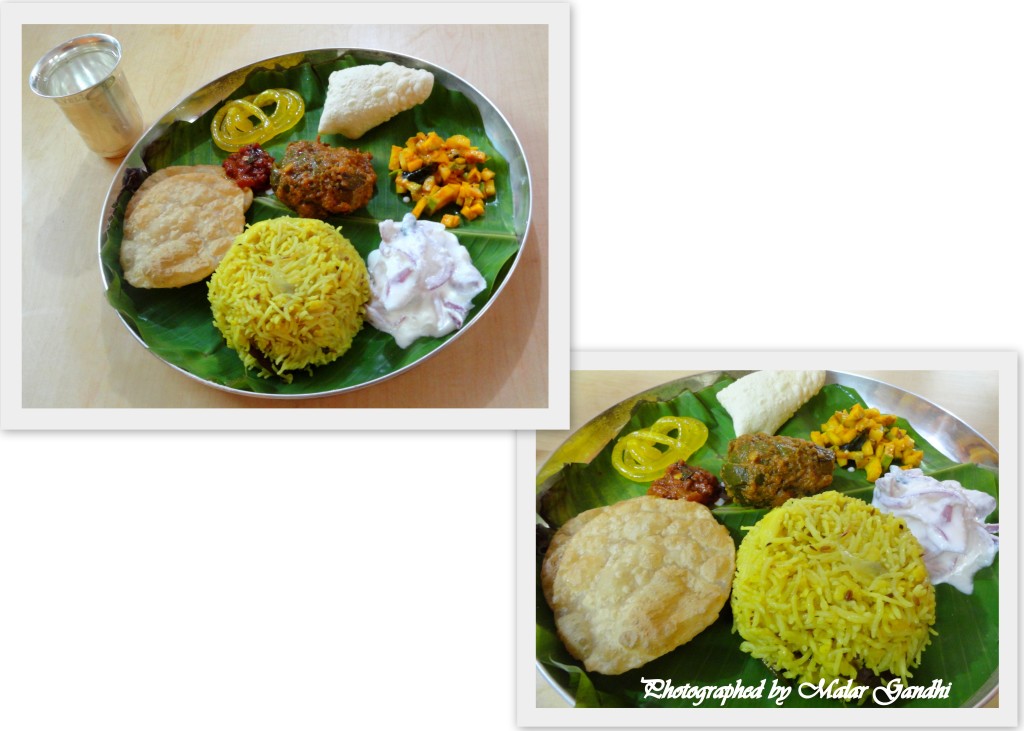Khichdi – A Comfort Food of The Masses
- 24
- January
- 2013
 Khichdi is a common South Asian dish made from rice and lentils. It is generally considered to be a India’s comfort food. The word ‘khichdi’ and its alternate spellings khichri, khicheri, cutcheree, kedgeree and kushari comes from a Sanskrit word ‘khicca‘, meaning rice and pulses based dish.
Khichdi is a common South Asian dish made from rice and lentils. It is generally considered to be a India’s comfort food. The word ‘khichdi’ and its alternate spellings khichri, khicheri, cutcheree, kedgeree and kushari comes from a Sanskrit word ‘khicca‘, meaning rice and pulses based dish.
Khichdi has a long history in India, pairing rice and lentils is quite an age old tradition in the subcontinent. It is an ancient pheasant meal, enjoyed by agriculturalists and village work force for centuries. The Greek ambassador of Seleucus Nicator (ca. 358 BC – 281 BC) mentioned that the rice and pulses combination is very popular among South Asians.
Authentic khichdi is considered to be light, nutritious diet and devoid of strong spices. It is an easy solution for infants and invalids. It is equally appreciated among many who follow Saatvik diet (Ayurveda). The moist version is called ‘gini- kitchri’ given to the invalids and dry version of ‘bhuni-kitchri’ is consumed by all.
It appears that khichdi is a traditional diet and daily meal of Kutch people (near Gujarat) and they make several varieties of it. Jean-Baptiste Tavernier, French traveler, a Jeweler and a merchant, came to India six times during 1640-1685, mentions that khichdi was made with green lentils, rice and butter and it was the popular peasant evening meal.
Needless to say, this humble dish got a special status during Mughal rule. Mughal cooks certainly knew how to take a simple country food from the streets and enrich it in the palace for the royals. They are the ones who gave this simple peasant meal, a rich gourmet appeal. During Mughul dynasty, (1400 – 1700s) the traditional khichdi went through various changes. They made it lavish by adding strong spices, dry fruits and nuts. In Ain-i-Akbari, a 16th Century document about the King Akbar, Abu’l Fazl mentions nearly seven variations of khichdi preparations in the Palace. A Russian adventurer Afanasiy Nikitin, who traveled in India during 16th Century, states that Mughal Emperor Jahangir popularized this dish. It is said that emperor, Aurangzeb was particularly fond of it too.
Later during British colonial rule (1858 – 1947), the recipe was soon adopted by Anglo-Indian families and went through complete metamorphosis. Adding fish and eggs is a noteworthy point here. As an authentic Indian version never encourages adding meat, fish or eggs to this dish. Soon, kedgeree became popular in UK during the reign of Queen Victoria. And Anglo-Indian kedgeree was such a fashionable dish in the colonial era, as it was served at breakfast in the homes of the wealthy.
According to one hypothesis, some claim that the dish originated from Scotland. And it was taken to India by Scottish troops during Colonial times. Where it was said to got adopted, as a part of Indian cuisine. Later the dish returned to UK and became popular among British colonies. The National Trust for Scotland’s book The Scottish Kitchen by Christopher Trotter has traced the origins for kedgeree recipe to books by the Malcolm dating back to the year 1790. However the general opinion still remains as an Indian dish, as it has been evidenced by its popularity throughout the subcontinent, since time immemorial.
© 2010 Malar Gandhi, All Rights Reserved. This material may not be published, broadcast, rewritten, or redistributed.
Recipes
Recent Posts
- Kebab – Taking only one bite at a time!
- Coin Parotta – Small Things Matter
- Bonda – Rainy Day’s Snack
- Chappathi Making Board & Rolling Pin – Matters!
- Chicken Croquttes – Love At First Bite
Recent Comments
- MahiArun on Idichakka Thoran – Kerala Special
- veena on Idichakka Thoran – Kerala Special
- M.P.Gandhi on Idichakka Thoran – Kerala Special
- M.P.Gandhi on Banana Milkshake – Wholesome Meal
- Manjula on Banana Milkshake – Wholesome Meal







